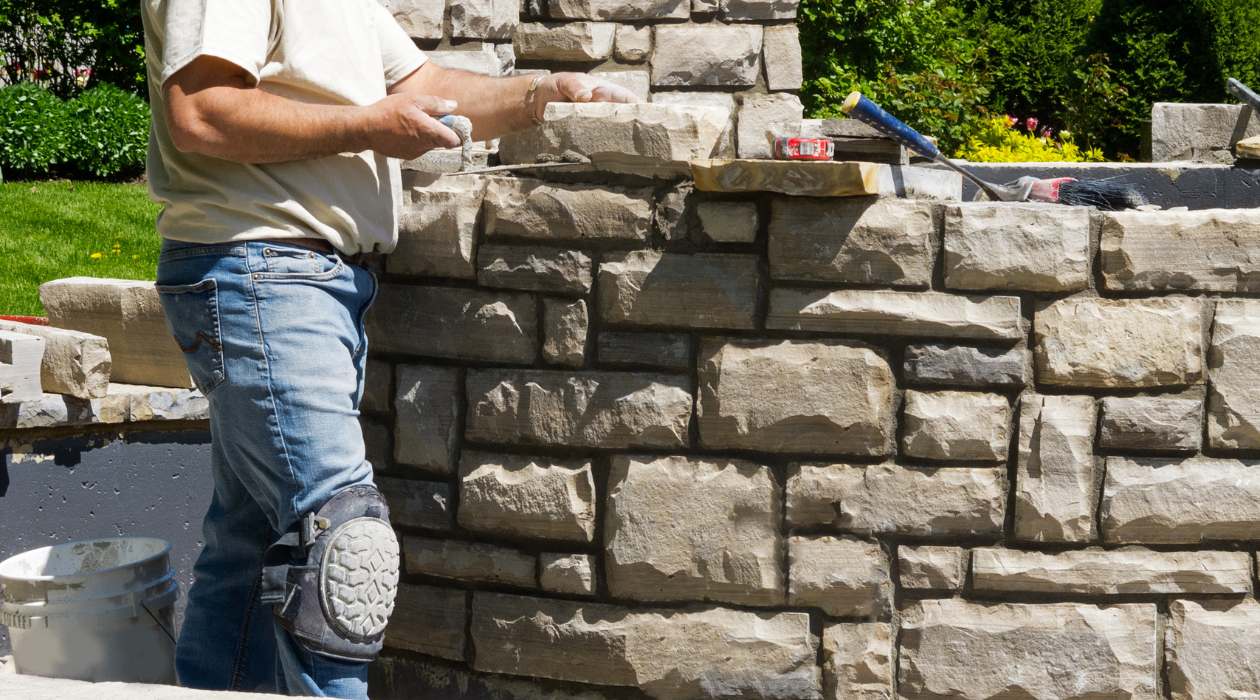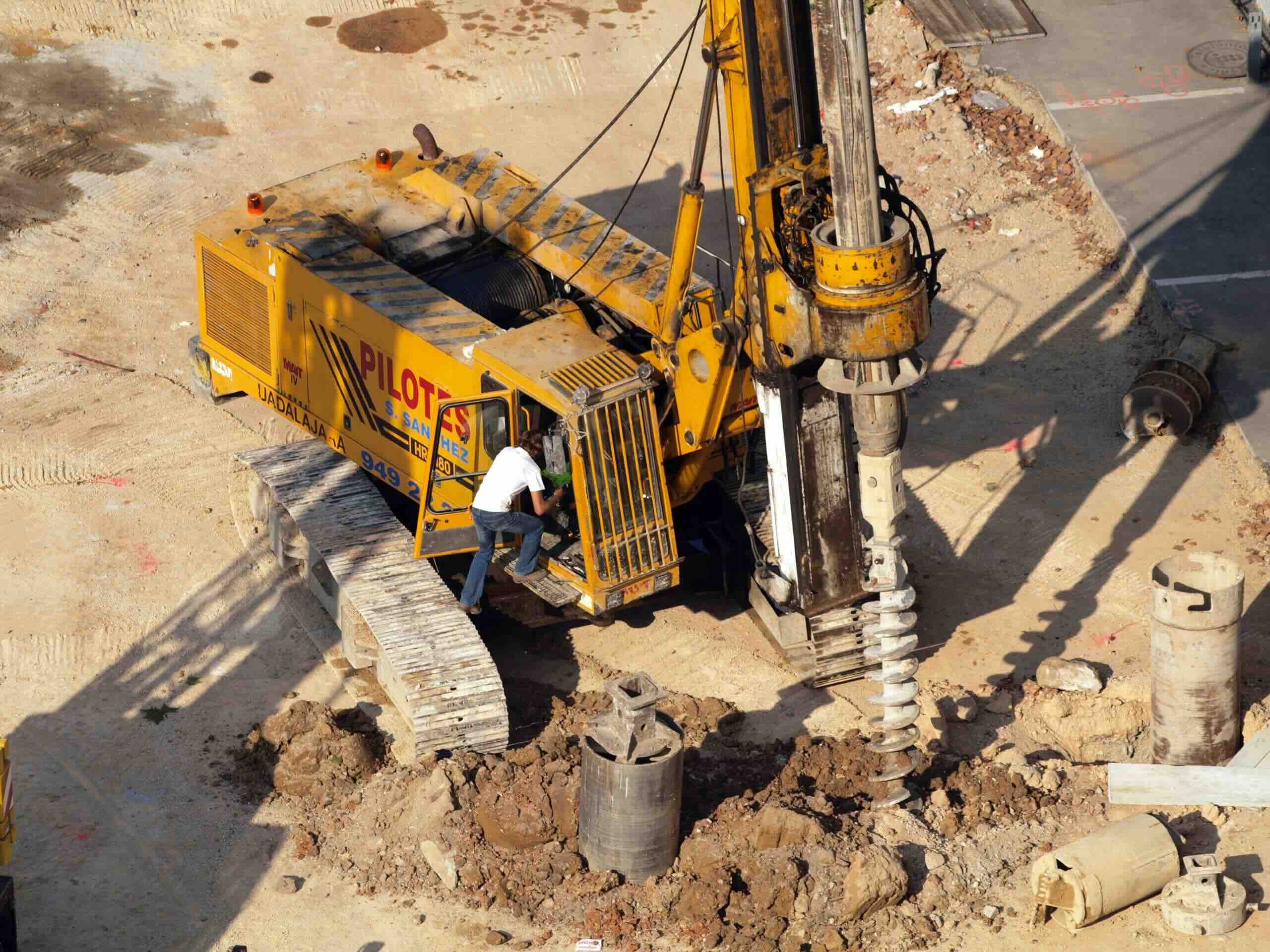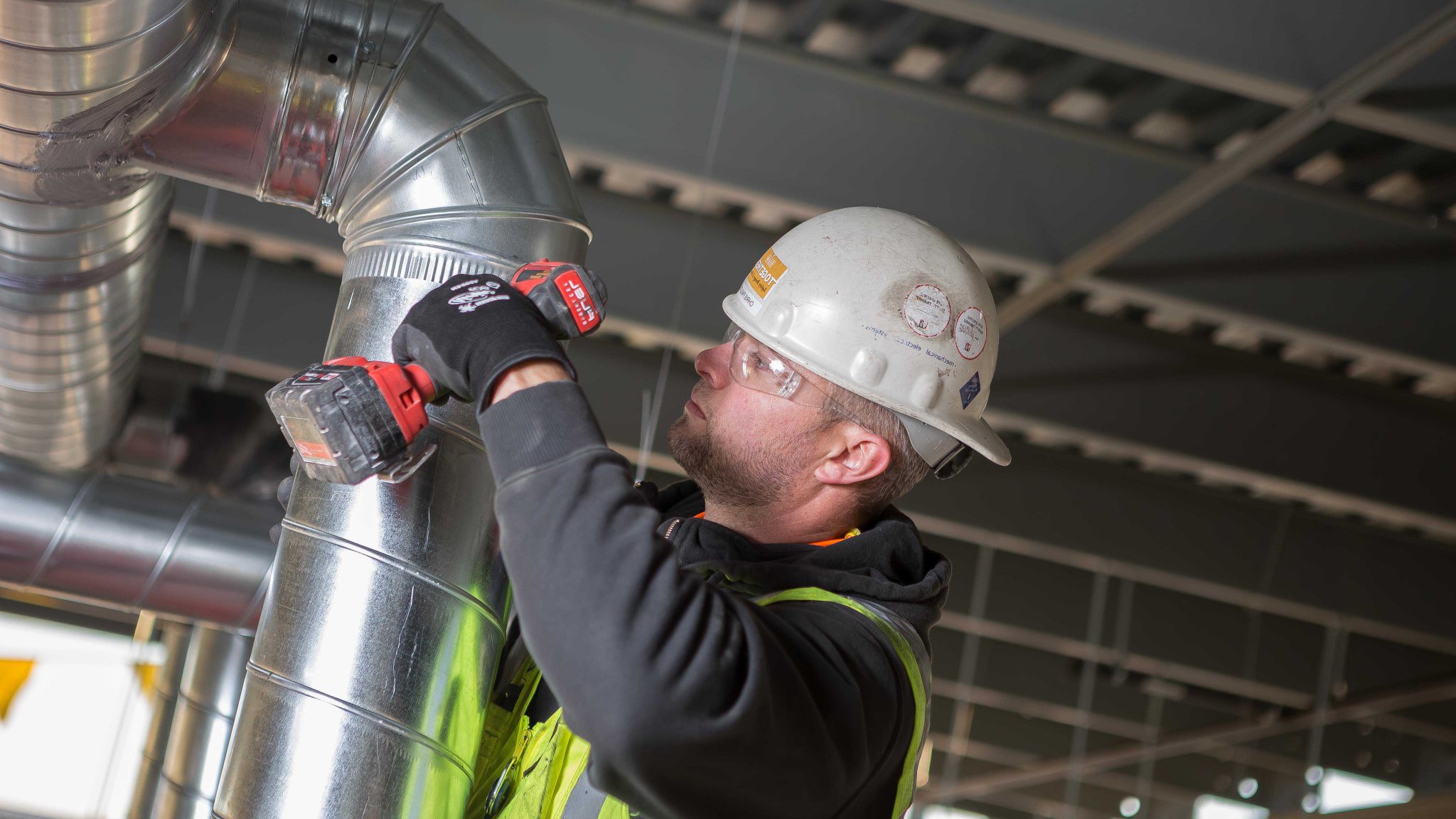Home>diy>Building & Construction>What Distinguishes Dry Masonry Construction


Building & Construction
What Distinguishes Dry Masonry Construction
Modified: February 28, 2024
Discover the benefits of dry masonry construction and how it sets itself apart in the world of building construction. Enhance your project with this innovative approach.
(Many of the links in this article redirect to a specific reviewed product. Your purchase of these products through affiliate links helps to generate commission for Storables.com, at no extra cost. Learn more)
Introduction
When it comes to building construction, there are various methods and techniques that can be employed. One such method that has gained popularity in recent years is dry masonry construction. But what exactly is dry masonry construction and what sets it apart from other construction methods?
Dry masonry construction, also known as dry stone construction, is a technique that involves building structures without the use of mortar or any other adhesive material. Instead, the stones or blocks are carefully arranged and fitted together to create a solid and stable structure.
This method has been used for centuries and is known for its durability and aesthetic appeal. It is particularly common in areas where natural stone resources are abundant, such as mountainous regions and coastal areas. Dry masonry construction can be used for a variety of structures, including retaining walls, fences, garden walls, and even entire buildings.
Now that we have a basic understanding of dry masonry construction, let’s dive deeper into its key characteristics.
Key Takeaways:
- Dry masonry construction offers a visually appealing, durable, and sustainable alternative to traditional building methods. Its absence of mortar and natural aesthetics make it an excellent choice for various construction projects.
- When considering dry masonry construction, factors such as suitable stone selection, skill and expertise of the construction team, structural considerations, moisture and drainage, project scale and complexity, and long-term maintenance needs should be taken into account.
Read more: What Is Masonry Veneer Construction
Definition of Dry Masonry Construction
Dry masonry construction, also known as dry stone construction, is a traditional building method that involves using stones or blocks without the use of mortar or any other adhesive material. Instead, the stones or blocks are carefully selected, shaped, and fitted together to create a solid and stable structure.
In dry masonry construction, the integrity of the structure relies on the careful arrangement and interlocking of the stones. This technique requires skilled craftsmanship and precise placement of each stone to ensure stability and strength.
One of the defining characteristics of dry masonry construction is the lack of mortar. Mortar is typically used in traditional masonry construction to bind stones or bricks together, but in dry masonry, the stones rely solely on their interlocking properties to create a stable structure.
Dry masonry construction can be further categorized into two main types: rubble masonry and ashlar masonry. Rubble masonry involves using irregularly shaped stones of various sizes, while ashlar masonry uses precisely cut and dressed stones.
This technique has been used for centuries and can be found in various parts of the world, each with its own regional styles and variations. It requires a deep understanding of stone properties and the ability to work with natural materials to create structures that can withstand the test of time.
Now that we have defined dry masonry construction, let’s explore its key characteristics.
Key Characteristics of Dry Masonry Construction
Dry masonry construction is characterized by several key features that set it apart from other building methods. These characteristics contribute to the unique aesthetics, durability, and sustainability of dry masonry structures:
1. Absence of Mortar:
In dry masonry construction, the absence of mortar is a defining feature. Instead of relying on mortar to bind stones together, the stones are carefully selected and fitted together to create a stable structure. This creates a visually appealing and natural look, showcasing the beauty of the stones.
2. Interlocking Stones:
The stones used in dry masonry construction are strategically interlocked to create a strong and stable structure. Skilled craftsmanship and precise stone placement are crucial to ensure the integrity of the construction. The interlocking of stones provides resistance to vertical and horizontal loads.
Read more: What Does Masonry Construction Mean
3. Natural Resistance to Displacement:
Due to the interlocking nature of the stones, dry masonry structures have a natural resistance to displacement caused by external forces such as earthquakes or ground settlement. The friction between the stones helps maintain the stability of the structure, mitigating the risk of collapse.
4. Breathable Structures:
Dry masonry structures allow for the natural exchange of moisture and air between the interior and exterior, creating a breathable environment. This can help regulate humidity levels and prevent issues such as condensation and mold growth commonly associated with sealed structures.
5. Sustainable and Environmentally Friendly:
Dry masonry construction utilizes natural and locally sourced materials, reducing the carbon footprint associated with transportation. The lack of mortar also eliminates the need for chemical additives, making it a more environmentally friendly building method. Dry masonry structures are also easily dismantled and recycled, minimizing waste and promoting sustainability.
6. Aesthetic Appeal:
Dry masonry construction offers a unique and visually striking aesthetic. The natural beauty of the stones, with their different textures, colors, and shapes, adds character and charm to the structure. Dry masonry structures often blend seamlessly with their natural surroundings, creating a harmonious integration with the environment.
These key characteristics make dry masonry construction an attractive choice for those seeking a durable, sustainable, and aesthetically pleasing building method.
Advantages of Dry Masonry Construction
Dry masonry construction offers several advantages that make it an appealing choice for various construction projects. Consider the following advantages:
1. Cost-Effective:
One of the notable advantages of dry masonry construction is its cost-effectiveness. Since it eliminates the need for mortar and other adhesive materials, the overall construction cost is often lower compared to traditional masonry methods. Additionally, dry masonry construction utilizes locally sourced stones, reducing transportation costs.
2. Durability:
Dry masonry structures have a long-standing reputation for their durability. The interlocking arrangement of stones provides inherent strength, allowing the structure to withstand external forces such as seismic activity. With proper maintenance, dry masonry can last for centuries, making it a wise investment in the long run.
3. Flexibility in Design:
Dry masonry construction offers design flexibility, allowing for creativity and customization. The irregular shapes and sizes of stones used in dry masonry can be arranged in various patterns and configurations, resulting in unique and visually appealing structures. This flexibility enables architects and builders to incorporate artistic elements and seamlessly blend the structure with its surroundings.
Read more: What Is A Masonry Fireplace
4. Sustainability:
Dry masonry construction aligns with sustainable building practices. It utilizes natural and locally sourced stones, reducing the carbon footprint associated with transportation. Additionally, the lack of mortar eliminates the need for chemical additives, making it an environmentally friendly choice. Dry masonry structures can also be easily disassembled and reused, minimizing waste and promoting sustainability.
5. Time-Saving:
Compared to other construction methods, dry masonry construction can be quicker to build. The absence of mortar means there is no need for curing time, allowing the construction process to proceed at a faster pace. This time-saving advantage can be particularly beneficial for projects with tight deadlines.
6. Maintenance:
Dry masonry structures typically require less maintenance compared to structures using mortar. The lack of mortar means there is no risk of mortar degradation or deterioration over time. However, it is still essential to inspect the structure periodically to ensure any loose or damaged stones are addressed promptly.
These advantages make dry masonry construction an attractive option for those seeking cost-effective, durable, and sustainable building solutions.
Disadvantages of Dry Masonry Construction
While dry masonry construction offers numerous benefits, it is important to consider its disadvantages before deciding on this building method:
1. Skill and Expertise Required:
Dry masonry construction requires a high level of skill and expertise. The proper selection, shaping, and fitting of stones require experience and knowledge of stone properties. Improper stone placement or lack of skill can compromise the stability and integrity of the structure.
2. Limited Load-Bearing Capacity:
Compared to reinforced concrete or mortared masonry, dry masonry construction has a limited load-bearing capacity. While dry masonry structures can effectively withstand vertical and horizontal loads, they may not be suitable for high-rise buildings or structures that require heavy load-bearing capabilities.
3. Vulnerability to Moisture:
Dry masonry structures are more prone to moisture penetration compared to structures constructed with mortar. The absence of mortar leaves gaps between stones, making it easier for water to enter and potentially cause damage, such as erosion or freeze-thaw cycles. Proper waterproofing measures are essential to protect dry masonry structures in areas with high moisture levels.
4. Time-Intensive Construction:
While dry masonry construction can be quicker than traditional methods, it still requires time for precision stone placement. Each stone must be carefully fitted together, which can be a time-consuming process, especially for complex designs or intricate patterns. The need for skilled labor and attention to detail can extend the construction timeline.
Read more: What Is Construction
5. Limited Design Flexibility in Some Cases:
Although dry masonry construction offers design flexibility in general, certain architectural styles and complex structural requirements may be difficult to achieve with dry masonry. The irregular shapes and sizes of stones may limit design possibilities compared to precise brick or block construction.
6. Maintenance:
While dry masonry structures generally require less maintenance, regular inspections are still necessary. Loose or damaged stones need to be addressed promptly to maintain the stability and integrity of the structure. Over time, weathering and natural settlement may require occasional repairs or repositioning of stones.
Despite these disadvantages, dry masonry construction remains a viable and attractive option for various building projects, particularly for those seeking a blend of aesthetics, durability, and sustainability.
Various Types of Dry Masonry Construction Techniques
Dry masonry construction encompasses a range of techniques, each with its own specific characteristics and applications. Here are some of the most common types of dry masonry construction:
1. Rubble Masonry:
Rubble masonry is characterized by the use of irregularly shaped stones of varying sizes. These stones are typically uncut and asymmetrical, giving the structure a more rustic and natural appearance. Rubble masonry is commonly used for retaining walls, boundary walls, and garden walls. The stones are carefully stacked and interlocked to create a sturdy and visually appealing structure.
Read more: What Is Pre-Construction In Construction
2. Ashlar Masonry:
Ashlar masonry involves the use of precisely cut and dressed stones that are uniform in size and shape. This technique creates a more refined and polished look. Ashlar masonry can be further categorized into two subtypes: coursed ashlar and random ashlar. Coursed ashlar refers to stones that are arranged in horizontal layers, while random ashlar involves stones placed in a more irregular pattern. Ashlar masonry is commonly used for structures that require a more formal and architectural appearance, such as facades of buildings or decorative features.
3. Dry Stone Retaining Walls:
Dry stone retaining walls are constructed by carefully selecting and arranging stones without the use of mortar. These walls are designed to retain soil and prevent erosion. The stones are placed at an angle, allowing for proper weight distribution and stability. Dry stone retaining walls can be found in various landscapes and have been used for centuries to create terraces, prevent landslides, and enhance aesthetic appeal.
4. Dry Stone Arch Bridges:
Dry stone arch bridges are arch-shaped structures created solely by the interlocking of stones, without the use of mortar or any other adhesive material. These bridges rely on the careful placement and distribution of stones to create a stable spanning structure. Dry stone arch bridges can be found in historical architecture and have the advantage of blending seamlessly with the natural environment.
5. Dry Stone Fireplaces:
Dry stone fireplaces are an example of interior dry masonry construction. These fireplaces are built using carefully selected stones stacked and fitted together without mortar. Dry stone fireplaces provide a rustic and natural focal point in interior spaces, combining functionality and visual appeal.
These are just a few examples of the various types of dry masonry construction techniques. Each technique requires skill, precision, and an understanding of stone properties to create stable and visually striking structures.
Factors to Consider when Choosing Dry Masonry Construction
Before opting for dry masonry construction for your project, it is important to carefully consider several factors that can impact the success and feasibility of this building method. Here are some key factors to keep in mind:
1. Suitable Stone Selection:
The selection of appropriate stones is crucial in dry masonry construction. Not all stones are suitable for this technique. Consider factors such as durability, density, and shape. Stones with good interlocking properties and resistance to weathering are preferable. It is essential to consult with a professional stonemason or architect to determine the most suitable stones for your specific project.
2. Skill and Expertise:
Dry masonry construction requires skilled craftsmanship and expertise. It is important to ensure that the individuals involved in the construction process have the necessary knowledge, experience, and attention to detail. Hiring experienced stonemasons or contractors specialized in dry masonry can help ensure proper techniques and construction practices are followed.
3. Structural Considerations:
The structural integrity of a dry masonry construction relies on the proper placement and interlocking of stones. Consider factors such as the load-bearing requirements of the structure, soil conditions, and environmental factors such as earthquakes or heavy rainfall. Consulting with a structural engineer can help assess the feasibility and suitability of dry masonry for your specific project.
Read more: What Is Dry Hot Pot
4. Natural Moisture and Drainage:
Since dry masonry structures do not rely on mortar, they are more prone to moisture penetration. Consider the natural moisture levels and drainage conditions in the area where the structure will be built. Proper waterproofing measures, such as the incorporation of drainage systems, can help mitigate potential water damage and ensure the long-term stability of the structure.
5. Project Scale and Complexity:
Consider the scale and complexity of your project when choosing dry masonry construction. While dry masonry can be suitable for various structures, complex architectural designs or large-scale projects may require extensive planning and skilled labor. Assess the resources and timeframe available for the project to determine its feasibility with dry masonry.
6. Maintenance and Longevity:
Consider the maintenance requirements and expected longevity of the structure. While dry masonry can be durable, periodic inspections and maintenance are essential to ensure the integrity of the structure over time. Assess the long-term maintenance needs and factor them into your decision-making process.
By carefully considering these factors, you can make an informed decision about whether dry masonry construction is the right choice for your specific project. Consulting with professionals in the field can provide valuable insights and guidance throughout the decision-making and construction processes.
Conclusion
Dry masonry construction, with its unique characteristics and benefits, offers a compelling alternative to traditional building methods. The absence of mortar and the careful interlocking of stones create visually appealing, durable, and sustainable structures. However, it is important to consider both the advantages and disadvantages of dry masonry construction when deciding whether it is the right choice for your project.
Advantages of dry masonry construction include cost-effectiveness, durability, design flexibility, sustainability, and time-saving benefits. The natural aesthetics and breathability of dry masonry structures add to their appeal, making them an excellent choice for various construction projects.
However, it is important to also consider the potential disadvantages of dry masonry construction. Factors such as the required skill and expertise, limited load-bearing capacity, vulnerability to moisture, and time-intensive construction must be carefully assessed and addressed for successful implementation.
When considering dry masonry construction, factors such as suitable stone selection, skill and expertise of the construction team, structural considerations, moisture and drainage, project scale and complexity, and long-term maintenance needs should be taken into account. Consulting with professionals in the field can provide valuable guidance and ensure the success of your project.
In conclusion, dry masonry construction offers a unique blend of aesthetics, durability, and sustainability. With careful planning, skilled craftsmanship, and proper consideration of the specific project requirements, dry masonry construction can be an excellent choice for creating visually striking and long-lasting structures.
Frequently Asked Questions about What Distinguishes Dry Masonry Construction
Was this page helpful?
At Storables.com, we guarantee accurate and reliable information. Our content, validated by Expert Board Contributors, is crafted following stringent Editorial Policies. We're committed to providing you with well-researched, expert-backed insights for all your informational needs.








0 thoughts on “What Distinguishes Dry Masonry Construction”